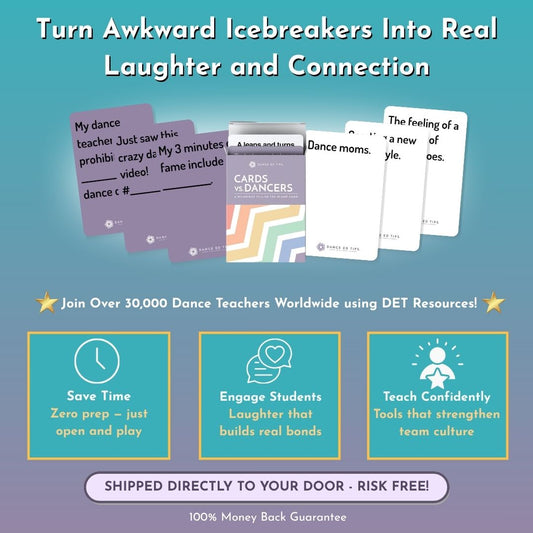By: Olivia Mode-Cater
Stickers and stamps are rewards that are often given out at the end of classes to increase compliance and motivation for younger dancers. I have even seen teachers even give out toys, sunglasses, flip flops, and stuffed animals to students at the end of class! I understand that particular students need this type of motivation due to developmental, social, and learning needs; however, there is much research that shows how giving rewards actually negatively impacts learning. Here are some of the findings:
- Devaluation. Students who have strong intrinsic motivation, who would have been compliant and engaged without the reward, are devalued. They take less pride in their work because they are being given a reward for something they would have done normally.
- Excessive reliance. Students who are given rewards for good behavior then tend to expect it every time. As a result, if they are not being enticed with a sticker or stamp, they will lose all motivation in class. Therefore, the rewards will work, but once removed the students will go back to how they started.
- Shift of focus. The students now focus on completing the task versus focusing on the quality of the work and actually acquiring the skills and knowledge that the teacher is providing. ("Pros and Cons of Reward Systems," 2015)
My solution:
I believe that dance itself should be the reward for good behavior in dance. I try to not give out stickers or stamps. This can be challenging, however, especially if you work in a school where the majority of the teachers give extrinsic rewards. Instead, I get my students hooked onto some really awesome dance games, such as Museum (Green-Gilbert, 1992) and my infamous Moon Dust game. I develop a classroom culture where my dancers understand that good behavior leads us to playing one of their favorite dance games. If we don’t have our listening ears and aren’t able to accomplish our plans for the day, we don’t play.
I feel good about this strategy because students are motivated by dance in order to participate fully in dance. I also like this because I adapt the dance games to support my learning objectives for that class. If I’m teaching a lesson on levels, I do a variation of the Museum game to incorporate levels, so my students are still learning and showing mastery of concepts even though they think they are simply playing a game! I think it is a winning strategy for the students and the teacher. Overtime, students can be weaned off of these games and transition into taking class without the use of any rewards; however, you may get some nostalgic teenagers who may ask you to bring back some of their childhood favorites!
I hope you take this strategy into your classroom and give it a try!
Happy teaching!
Olivia
Bibliography
Brewer, E., Dunn, J., & Olszewski, P. (1989, March & April). “Extrinsic Reward and Intrinsic Motivation: The Vital Link Between Classroom Management and Student Performance” . Journal of Education for Teaching , 2(2).
Gilbert, A. G. (2004). Creative dance for all ages: a conceptual approach. Reston, VA: American Alliance for Health, Physical Education, Recreation, and Dance.
Pros and Cons of Reward Systems for Primary Schools Infographic. (2105, November 16). Retrieved January 22, 2018, from https://elearninginfographics.com/pros-cons-reward-systems-primary-schools-infographic/





